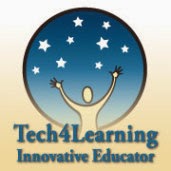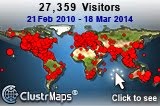1. I need to blog more. I am doing good work and learning a lot. The missing piece is that I do not reflect and share enough. Actually, I reflect almost constantly in my head or in my daily conversations with Silvia. It's the sharing piece that is missing, as well as pushing myself to organize the ideas and communicate them to others who may not have the same background knowledge. I get in my own way with my expectations for each blog post. Sometimes less is more.
2. I am glad I brought the big heavy boots (thanks, Marjie) and not glad I brought the big heavy SLR camera. I should have stuck with just using my iphone as a camera. As much as I love photography, I love traveling light even more.
3. Talking is an important part of my learning. My 6 year-old son frequently interrupts others, saying, "I NEED to talk." One of the hardest things for him in school is how much he is not allowed to talk. Once, when having yet another discussion with him about school behavior, he looked down sadly and said, "I just want to be able to talk."
I have to admit that I can relate to this. I think I am a good listener, too, and I don't need to talk all the time, nor do I think I talk too much (most of the time). However, I LOVE the Educon model of a conversation. Participating is an important part of my learning. If I'm not included in the conversation, like with a traditional presentation, I usually turn to tweeting to get my talking fix. But I prefer actively engaging with the ideas as opposed to just listening and taking notes.
4. If I feel this way, others must feel this way, too. I think one of the biggest things I've taken away from the Educon and Edubloggercon model is that professional development has to change. Just like classroom teaching has to change. I think maybe as teachers and presenters we get overly bogged down in how much there is to say. We just want to make sure not to miss an important point or resource. However, actions speak louder than words, and I think I speak for a lot of teachers when I say that teachers are tired of the hypocrisy of a presenter talking at teachers telling them not to teach by talking at students. PD must become more active and engaging.
A lot of teachers complain of feeling overwhelmed after professional development, where so much is introduced at once by a well-meaning presenter. I think that a common response to this feeling is to totally shut down. Less is more!
5. I really liked the lunchtime "Encienda EduCon" where people delivered a 5 minute talk using 20 slides that automatically advanced. I think this would be an excellent model for site-based professional development. I would love to hear from every teacher at my school this way. I think it would have far-reaching implications.
---It is already day 2 now, and I didn't get past #5. But it's time to pay attention again... so much to learn. I'm going to stop here and publish. Sorry if my title was a bit misleading...
6. 7. 8. 9. 10. I guess less is more!




